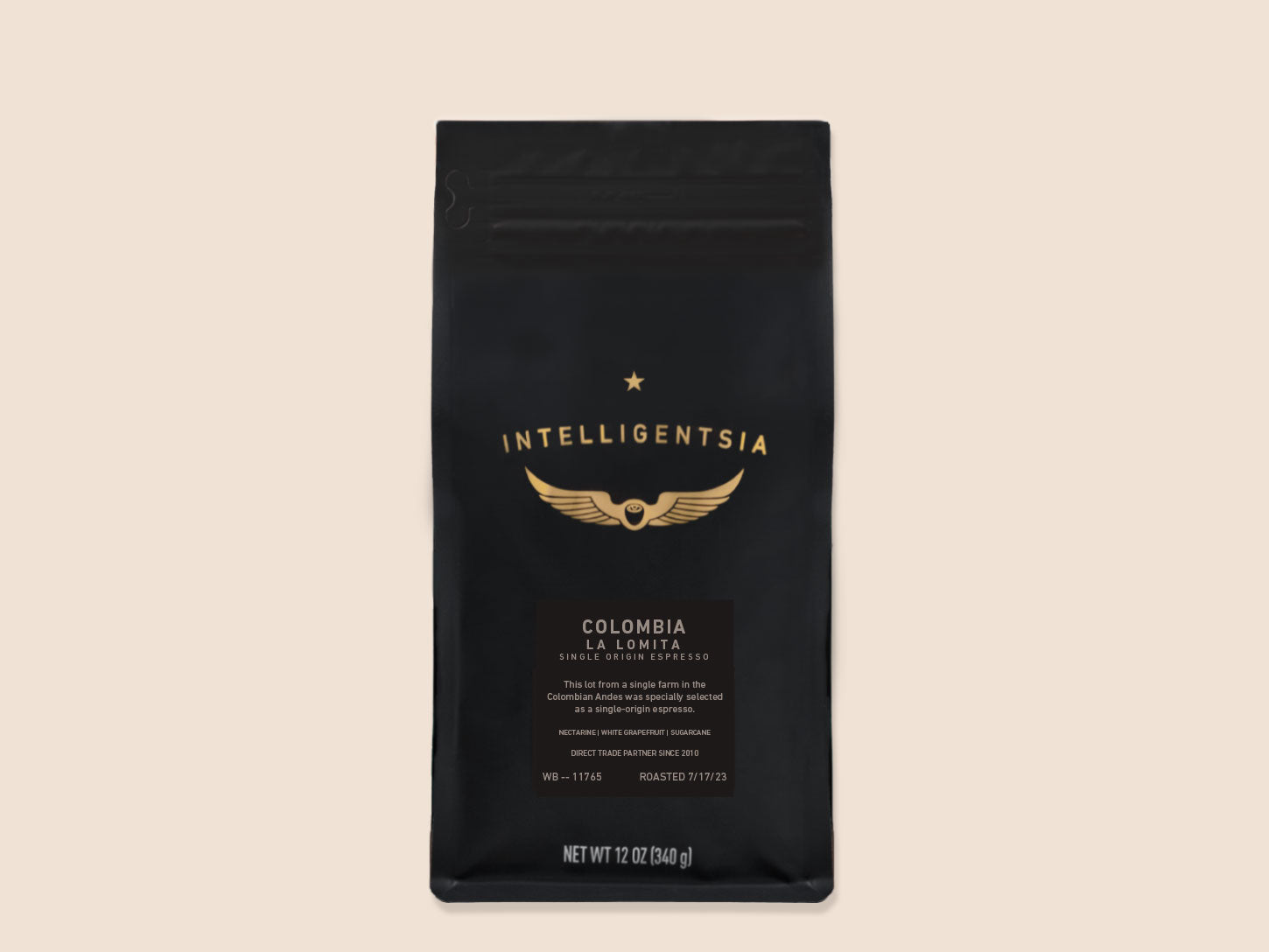Savor the Distinctiveness with Freshly Roasted SOE Single Origin Espresso
Savor the Distinctiveness with Freshly Roasted SOE Single Origin Espresso
Blog Article
Comprehending Coffee Beans: the Journey From Espresso to Blended Coffee Beans

The Beginnings of Coffee: A Global Point Of View
While you may believe of coffee as a modern-day staple, its beginnings map back centuries, linking with cultures throughout the world. The tale begins in Ethiopia, where legend says a goat herdsman named Kaldi discovered the stimulating impacts of coffee beans after seeing his goats romping energetically after consuming them.
As trade paths broadened, coffee made its method to Europe in the 17th century, promptly gaining popularity. Each culture added its distinct twist to coffee preparation, enhancing its background.
Growing and Harvesting of Espresso Beans
As coffee's journey developed, the focus shifted to the cultivation and harvesting of particular bean ranges, specifically those made use of for coffee. You'll find that espresso beans typically come from Arabica or Robusta plants, each offering distinct tastes. The ideal expanding problems include high altitudes and rich, well-drained dirt, which boost the beans' high quality.
During the harvest, selecting methods vary. In some areas, employees hand-pick ripe cherries, making certain only the most effective fruit mosts likely to handling. In other areas, mechanical farmers are used, especially on bigger ranches. When the cherries reach peak perfection for maximum flavor., timing is vital; you desire to harvest.
Once collected, the beans are planned for handling, which is necessary in determining their last taste. Understanding the growing and harvesting procedures gives you understanding into what goes into your preferred espresso, enriching your appreciation for every cup.
Handling Methods: From Cherry to Bean
Since you have actually discovered gathering coffee beans, let's discover how those cherries change right into the coffee beans you like. You'll see how different harvesting strategies impact taste, followed by the crucial actions of fermentation and drying. Ultimately, we'll break down the milling and grading procedure that determines your coffee's top quality.
Collecting Techniques Explained
When it pertains to coffee, recognizing harvesting methods is important, given that they directly affect the flavor and top quality of the beans you enjoy. There are two main approaches: selective selecting and strip selecting. Selective picking includes hand-picking just ripe cherries, guaranteeing you get the finest high quality beans. This approach often results in a richer taste account, though it's even more labor-intensive. On the various other hand, strip picking means harvesting all cherries at the same time, no matter perfection. While it's quicker and cheaper, this can result in a mix of flavors, impacting the final item. Inevitably, the selection of collecting strategy can significantly influence your coffee experience, so it deserves understanding exactly how those beans made it to your cup.
Fermentation and Drying Out
After gathering, the next steps in processing coffee beans play a considerable duty in shaping their flavor. You'll locate that fermentation is vital, as it assists damage down the mucilage bordering the beans, enhancing their preference account. Depending on the technique, this procedure can last from a couple of hours to a number of days, with varying results based upon temperature and moisture.
Sun-drying enables the beans to absorb flavors from the setting, while mechanical drying warranties constant dampness levels regardless of weather. Correct drying out is crucial to stop mold and mildew and protect the beans' high quality, inevitably affecting your mug of coffee.
Milling and Grading Refine
As fermentation and drying out set the phase for taste development, the milling and grading process assurances that just the finest coffee beans make it to your mug. This stage includes getting rid of the outer layers of the coffee cherry, consisting of the parchment and husk. Top quality beans obtain a higher quality, resulting in a richer coffee experience.
Toasting Methods: Opening Taste Prospective
When you roast coffee beans, the method you choose can substantially affect the taste account. Comprehending the partnership between time, temperature level, and roasting methods is key to disclosing the possibility of your brew. Allow's check out exactly how these elements integrated to develop the excellent mug.
Roasting Techniques Discussed
While you might assume that all coffee roasting techniques yield the same results, the truth is that each technique exposes distinct taste potentials in the beans. Drum roasting makes use of a turning drum to equally disperse heat, improving caramelization and generating a balanced taste. Air roasting, on the various other hand, distributes warm air around the beans, promoting a lighter roast with noticable level of acidity.

Influence On Taste Account
Different roasting techniques not only influence the process but also considerably influence the taste account of the coffee beans. Dark roasts, on the various other hand, bring out strong, smoky flavors, in some cases concealing the bean's special attributes. Comprehending these nuances helps you appreciate the artistry behind your cup of coffee, enhancing your total experience with every sip.
Time and Temperature Level Variables
To launch the full flavor potential of coffee beans, both time and temperature level throughout the toasting process play significant roles. When toasting, you'll locate that higher temperatures can quickly create tastes, yet if you hurry it, you might end up with burned notes. Alternatively, reduced temperatures permit a more steady taste advancement, showcasing the beans' unique characteristics.

Timing is just as crucial; prolonging the roast also long can cause a loss of acidity and illumination, while too brief a roast might leave the beans underdeveloped. Discovering that sweet area requires method and experimentation. By changing these factors, you can expose the abundant, complex tastes hidden within each bean, creating an absolutely exceptional coffee experience.
The Art of Mixing: Crafting Distinct Coffee Accounts

Beginning by picking a base coffee that provides a solid foundation. An intense Ethiopian bean can bring fruitiness, while an abundant Brazilian coffee includes body.
As you mix, maintain in mind that each combination tells a story. You're not simply making coffee; you're developing an experience. Take your time, taste often, and take pleasure in the trip of finding your signature blend - Single Origin Espresso.
Brewing Methods: How Prep Work Influences Flavor
Blending coffee opens a domain name of taste possibilities, helpful hints but how you make that mix can substantially affect your final cup. Different developing approaches extract distinct flavors and fragrances, so it's crucial to pick intelligently. For circumstances, a French press allows debris and oils to stay, producing a rich, robust experience. On the other hand, a pour-over highlights the coffee's clarity and illumination, ideal for showcasing fragile notes.
Espresso, with its high pressure, generates a concentrated shot that accentuates sweet taste and crema. If you choose a lighter mixture, think about a cold brew approach; it generates a smooth, much less acidic taste.
Changing variables like water temperature, grind dimension, and make time can transform your coffee's profile. Welcome the art of brewing to uncover the flavors hidden in your coffee blends.
The Future of Coffee: Sustainability and Technology
As the coffee industry progresses, sustainability and innovation are ending up being essential for resolving environmental challenges and meeting customer needs. You'll notice that more coffee firms are taking on environment-friendly techniques, from sourcing her latest blog beans ethically to executing sustainable farming strategies. These shifts not just help the world however additionally boost the quality of the coffee you take pleasure in.
You could see innovations like biodegradable packaging and water-saving brewing techniques that minimize waste. Advanced modern technology, such as blockchain, is also becoming popular, ensuring transparency in the supply chain, which allows you to trace your coffee back to its beginnings.
Furthermore, investing in local communities and supporting farmers through fair profession campaigns promotes a much more lasting coffee environment. As you drink your next cup, bear in mind that your choices can add to a brighter future for coffee. By deciding for lasting brand names, you're not just appreciating a drink; you're making a favorable effect on the globe.
Often Asked Concerns
What Is the Distinction Between Arabica and Robusta Beans?
Arabica beans are smoother, sweeter, and have a greater level of acidity, while robusta beans are more powerful, much more bitter, and contain even more high levels of caffeine. You'll observe these differences in taste and scent when making your coffee.
Exactly How Does Altitude Affect Coffee Bean Taste?
Elevation effects coffee bean flavor considerably. Greater elevations produce beans with brighter level of acidity and complicated flavors, while lower elevations often produce beans that are larger and less nuanced. You'll see these distinctions in your cup!
What Are the Health And Wellness Advantages of Drinking Coffee?
Consuming alcohol coffee can improve your power, enhance mental focus, and also enhance physical efficiency. It's rich in antioxidants, might lower the threat of specific diseases, and can promote a healthier metabolic rate when consumed in small amounts.
Can Coffee Beans Be Recycled for Developing?
Yes, you can reuse coffee beans for brewing, however the taste could be weak. If you appreciate experimenting, try recycling them in various ways, like chilly mixtures or contributing to shakes for an extra kick.
Exactly how Should I Shop Coffee Beans for Freshness?
To keep your coffee beans fresh, save them in an airtight container in an awesome, dark location. Avoid subjecting them to warmth, moisture, or light, as these elements can promptly weaken their taste and aroma.
Comprehending Coffee Beans: the Trip From Coffee to Blended Coffee Beans.
Currently that you've learned concerning harvesting espresso beans, let's check out exactly how those cherries change into the you could try this out coffee beans you like.When you roast coffee beans, the technique you select can drastically affect the flavor account - Single Origin Espresso.While you may think that all coffee toasting techniques yield the same results, the truth is that each technique discloses one-of-a-kind taste potentials in the beans.Various toasting approaches not just influence the process however likewise substantially impact the flavor profile of the coffee beans
Report this page